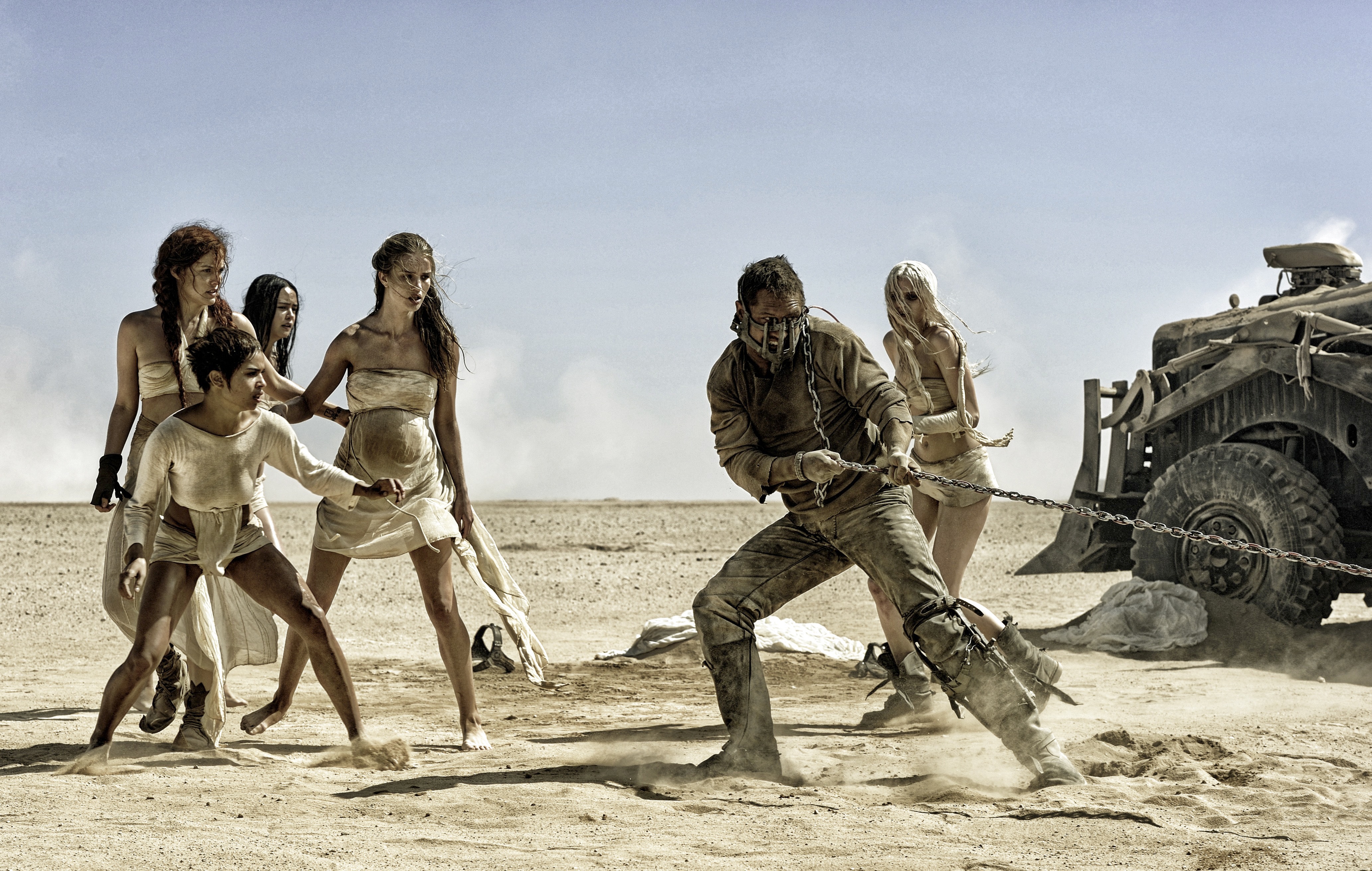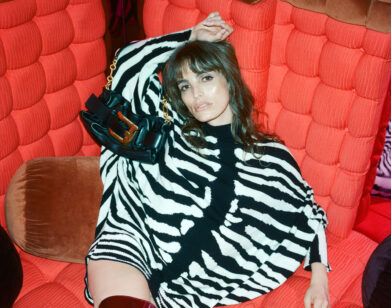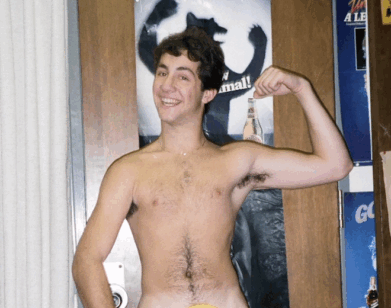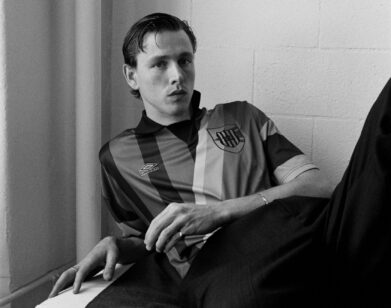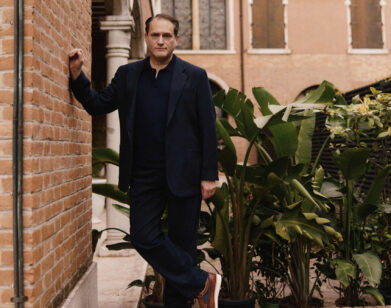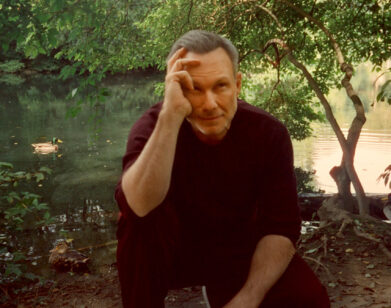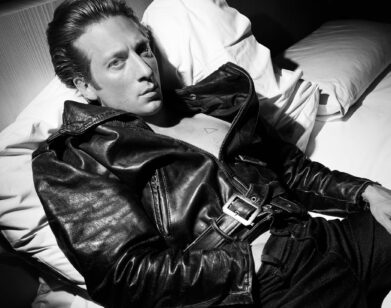Jenny Beavan’s Mid-Career Breakout
Tomorrow, the voting closes for Academy Award Nominations. Among the films vying for a Best Costume nod (as well as Best Picture) is Mad Max: Fury Road. For its costume designer Jenny Beavan, who was just nominated for a Costume Designer’s Guild Award this morning, Fury Road feels like a new era. Over the last 30-plus years, Beavan has become one of the preeminent costume designers for period films. She shared an Oscar with John Bright for her work on A Room With A View (1986), and has received eight further nominations for the likes of Ang Lee’s Sense and Sensibility (1995), Robert Altman’s Gosford Park (2001) and Tom Hooper’s The Kings Speech (2010). A Londoner all her life, Beavan began her career working on Gilbert & Sullivan television musicals, and has designed costumes for Henry James and Charlotte Brontë adaptations. She’s dressed multiple monarchs and several Winston Churchills.
The third installment in George Miller’s Mad Max franchise, Fury Road takes place in a dystopian desert where basic resources such as water are carefully guarded. The motley crew of characters includes Immortan Joe, the repugnant tyrant of the Citadel who is decomposing under his armor; his harem of beautiful, enslaved “wives;” his horde of pale, bald, red-eyed, half-dead War Boys; his terrifying son Rictus Erectus; and his counterparts at the Bullet Farm and Gas Town. Then there are the heroes: the relatively normal Max Rockatansky, played by Tom Hardy, and the ass-kicking, one-armed Imperator Furiosa (Charlize Theron). Filmed in Namibia, much of the plot revolves around a chase across the desert, during which costumes have to withstand stunt crashes and dust storms. There was no script, rather everyone worked off of storyboards.
When we meet for coffee before the holidays, Beavan has just wrapped Gore Verbinski’s A Cure for Wellness in Berlin. She has other projects brewing, but is keen to take a few weeks off. “I need that time to get hungry again,” she explains.
Beavan is anything but pretentious. “I would hate for anyone to think I did it on my own,” she emphasizes of Fury Road. “It was so much about teamwork and the whole experience of working in Namibia…I would like to think I was the mother figure, keeping my flock together.”
Nor would she ever want to her costumes to overshadow the story. “You should approach each job absolutely in its own way and give it whatever it needs,” she says. “I don’t want anyone to ever think ‘that’s a Jenny Beavan.'”
EMMA BROWN: What made you want to take on Mad Max?
JENNY BEAVAN: The fact that it was so different to anything I’d ever done. I’ve always wanted to do a variety of work, and I’d always harbored a slight fantasy to do something spaceage. Then this came, which couldn’t have been a more perfect project because it’s so individual. It’s not like a Marvel where you’re following people’s perceptions of superheroes. This is completely off-the-wall—George’s imagination, Brendan McCarthy’s imagination, my imagination. It’s just the most brilliant sort of breakout.
BROWN: How did it come your way?
BEAVAN: One of the producers was Iain Smith, who’s a U.K.-based producer, and he’d done Alexander. I’d known him for years. When they were looking for a costume designer, he said, “You ought to meet Jenny Beavan,” because he knew I was quite good in deserts, I was up for a challenge. It was Iain Smith who then introduced me to George.
They first started to try and make the film in something like 2003, and with the Iraq War, it just got too difficult and dangerous. All sorts of things happened. They tried again in 2010, and then we actually made it in 2012. Norma Moriceau, who had been the costume designer [for the previous Mad Max films], is a lot older than I am and really didn’t want to go to the desert for a year. She was very happy to have someone else take over.
BROWN: What was that first meeting with George like?
BEAVAN: It was a bit hurried because he was in the middle of editing Happy Feet 2. I went to the studios and met him. We had a cup of tea and then he had to get back. I just had one book with me, which I thought was kind of appropriate, called (un)Fashion, and it’s just great photographs of people wearing clothes that are amazing looking but nothing to do with fashion. I think he really liked the book.
BROWN: Had you seen the original Mad Max films?
BEAVAN: By that time, yes. I got them and watched them. I love the first one because of the weird atmosphere that happens when things go wrong. We had riots in London about three or four years ago, and down where I live in South East London, it was so weirdly quiet. There was this amazing throbbing in the air and you felt that civilization is so fragile, it could go either way. I was on my own in my quite big house and I turned the lights off and I watched out of the window. My neighbors were, I’m sure, doing the same: keeping very low in case. People were running up and down the street, but nothing happened. [George] encapsulated that in the first film. The second one, I thought was wonderful and mad and very funny as well. The third one, I never quite got through. I don’t know why. But by that time, I understood what he was on about.
BROWN: You mentioned that this project wasn’t like a Marvel film where you have to conform to someone else’s preconceptions, but what about the first three Mad Max films? Did George tell you not to worry about them?
BEAVAN: George has a real vision, but there were other areas where I could absolutely bring ideas to him. He was open to everything I brought to him; he just didn’t always want it. Originally, I thought he wanted something completely new, so I went off and did all sorts of research and found images and did moodboards. We used a lot of it, but there were some things where he just got an idea. The Immortan Joe was from a very weird drawing by a Japanese artist years ago, and he just liked it. We changed it, but the feeling of it is slightly Japanese. The reason [for its design], also, was that it was protecting his rotting body. Most things had a reason—they were either to do with trying to help them breathe, or protecting them from the elements.
BROWN: The makeup is quite distinctive—especially on the War Boys and Furiosa. When did that come into the design process?
BEAVAN: Lesley Vanderwalt had been on board all the way. She had done Road Warrior, so Lesley was absolutely part of it forever. They were always prepping. I went to Australia with some stuff to show George. I went to the studios where they were working, and Leslie was doing makeup on people. We did a complete tryout was months before [filming]. She and I worked very closely.
BROWN: In the past, you’ve said that you start each new project a rack of clothing. Was that true for Mad Max?
BEAVAN: Yeah. We set up in Namibia in a workroom in an old garage and got a local crew. We had some key people in from the U.K., Australia, and South Africa. They had tried to make this film 10 years before, so I got all the boxes of bits and bobs that they had and had them shipped to Namibia, because there isn’t very much in Namibia. So I had stuff, and then I just got fabrics and started to drape on stands. I always do it on a body—real or mannequin.
BROWN: So you don’t sketch first?
BEAVAN: No. I had a concept artist, and I used to then send him photographs of what I’d done, and he would send stuff back. He and George got on brilliantly, and he’s also a marvelous sculptor, so he ended up sculpting a lot of the things and making masks.
BROWN: Whose costume was the most time consuming in terms of both design and construction?
BEAVAN: Rictus Erectus, because of all of his bits and pieces and his mask and his breathing thing. There were so many bits and bobs, and he had to be fairly agile in it. It’s all very well making them look good, but they’ve actually got to move. They’ve got to be on top of vehicles, they’ve got to leap here and there or the double may have to.
BROWN: Do you prefer it when actors have opinions about their costumes? Or is it easier when they are ambivalent?
BEAVAN: I much prefer it when they care. The worst thing is when they just stand there and don’t have an opinion at all. They will have thought about the part, and they will have thought about what they have to do, so it’s much nicer for me. Unless they have a completely opposing opinion, which can be quite challenging, but then George was at lots of the fittings. It was lovely when he was there because he really got so excited. He’s just the nicest man. He tried so hard to make this film and we were doing it, we were absolutely doing it.
BROWN: When you started out, were there any costume designers you looked to as particularly inspirational?
BEAVAN: The main two who I absolutely thought were amazing are the two that everybody will say: Pierre Tosi and Anthony Powell. Occasionally I’ve seen beautifully costumed pieces, but I wouldn’t say that I’m particularly in awe of any costume designer. People do their own thing. Sandy Powell is much more theatrical, I would say, than I am. She does things that look much more designed. I think my forte is doing things that don’t look designed; they just look like they happened. I admire what she does, but it’s not my style. I thought Steve Jobs, Suttirat Anne Larlarb did an amazing job and Kasia Walicka-Maimone did a fantastic job on Foxcatcher last year. There’s lots of good people out there.
BROWN: What happens to the costumes after you finish a film? I know sometimes they are deconstructed—is that upsetting?
BEAVAN: The only thing I want from a film is the DVD. I don’t want bits of costume floating around my house, thank you very much. A lot of the costumes I’ve done are at Cosprop, the costume house in North London. They go out on exhibition a lot. John Bright, who owns Cosprop, tends to keep back particular costumes from films he think are important, because he knows how useful it is for film companies or designers to have their work available. If you rented the costumes, they go back to the costume house. If they’ve been made new to hire by the costume house, they go back and are embargoed until the film comes out. Then they can go into stock and be used by anyone. Or sometimes John puts them into his exhibition stash. If they’ve been made, whoever’s made them—be it Warner Brothers, Disney—gets them. I really wouldn’t want them. They’ve done their job for me. It’s over.
BROWN: Do you keep photos or mementos around your house?
BEAVAN: I’ve just given most of my work to the British Film Institute. It was all the files and photographs and everything before digital. My hall was absolutely stacked. It was such a relief to get it out of the house and not destroy it. They haven’t yet got Mad Max or Child 44—there are a few recent ones—but I will keep giving it to the BFI. They look after it beautifully—it’s there if anybody wants it, it’s there if I want it. The only thing is sometimes the actors will sign a silly photo of themselves, that, of course, I keep.
BROWN: Tom Hardy was in Child 44 as well. Do you like working with the same actor again? Does it make a difference to you?
BEAVAN: I love it. I like all the actors—I really don’t have a problem with actors—but Tom is very special. I’m sad I haven’t worked with him since. But we will work again. He’s just the best.
BROWN: You mentioned “before digital.” How has the internet changed how you worked?
BEAVAN: It’s changed it in so many ways. For research, obviously, it’s fantastic. Although I was just around the corner in Foyles, the bookshop, and there’s nothing like being in a bookshop. Your eyes wander, you go into a section and you see things you never thought to look up. It’s amazing for emailing photographs and keeping everyone in the loop, and disastrous for them all changing their minds. They can change anything at the touch of the button. They’re far more disorganized now—we’re all expected to have everything at our fingertips.
BROWN: Has there been any one project that you felt changed your career? I know you won your Oscar for Room With A View.
BEAVAN: Room With A View was helpful, but the minute you win an Oscar, you often don’t work. It’s just one of those things. It’s called “the curse of the Oscar.” For whatever reason, you go for about six months thinking, “What have I done wrong?” And it’s probably nothing. But I’m sure that’s the one that really helped, and then I think just the buildup [of projects]. When I was working with John—because it was often Jenny Beavan and John Bright—we just kept producing the goods.
BROWN: When did you part ways?
BEAVAN: I think it was after Jefferson in Paris, because I needed to earn more money. We’re still the best of friends. I see him as often as possible, and I work out of Cosprop when I can. He owns this amazing costume house, but I needed to bring up a child and pay a mortgage and all that, so I started to do slightly more commercial stuff.
BROWN: Did you ever do anything completely commercial—an advert or a music video?
BEAVAN: I did the Jaguar commercial for Tom Hooper, “It’s good to be bad” with all the Brits—Tom Hiddleston. He’s just the most gorgeous young man. You’ll think I’m in love with all of them, but they’re all quite safe. I’m old enough to be their mother.
BROWN: Just the Toms.
BEAVAN: I have a great fleet of Toms I’m very fond of. But I have done the odd commercial. I did the Game of War app with Kate Upton, who is the most lovely girl. We had to show her assets. That was good fun. I went to Slovenia and shot that.
BROWN: Do you keep an eye on certain directors you want to work with in the future?
BEAVAN: No. I’m interested in all of them.

